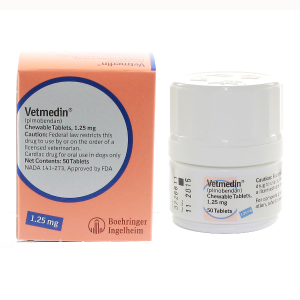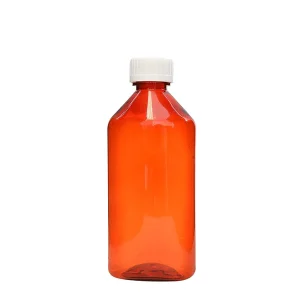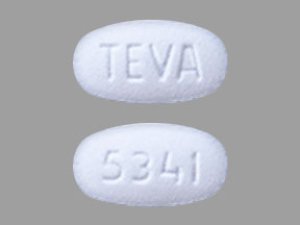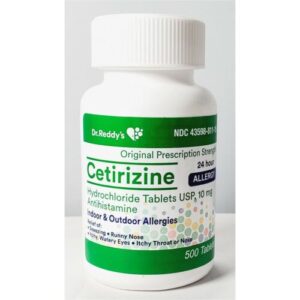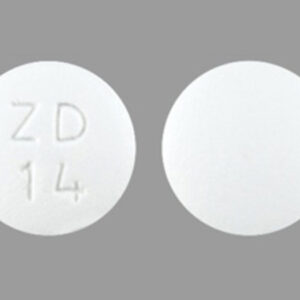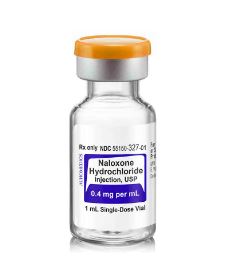Delivery Method: Via Electronic Mail – Delivery and Read Receipt Requested Reference #: 320-25-113 Product: Drugs Recipient:
Recipient Name
Ms. Treasure Holston
Recipient Title
Chief Executive Officer
Kath Khemicals LLC
51821 Industrial Drive
Macomb, MI 48042
United States
Issuing Office: Center for Drug Evaluation and Research (CDER)
United States
Warning Letter 320-25-113
September 22, 2025
Dear Ms. Holston:
The United States Food and Drug Administration (FDA) inspected your drug manufacturing facility, Kath Khemicals LLC, FEI 3000719870, at 51821 Industrial Dr., from March 31 to April 3, 2025.
This warning letter summarizes significant violations of Current Good Manufacturing Practice (CGMP) regulations for finished pharmaceuticals. See Title 21 Code of Federal Regulations (CFR), parts 210 and 211 (21 CFR parts 210 and 211).
Because your methods, facilities, or controls for manufacturing, processing, packing, or holding do not conform to CGMP, your drug products are adulterated within the meaning of section 501(a)(2)(B) of the Federal Food, Drug, and Cosmetic Act (FD&C Act), 21 U.S.C. 351(a)(2)(B).
We reviewed your April 15, 2025, response to our Form FDA 483 in detail and acknowledge receipt of your subsequent correspondence.
During our inspection, our investigator observed specific violations including, but not limited to, the following.
1. Your firm failed to have, for each batch of drug product, appropriate laboratory determination of satisfactory conformance to final specifications for the drug product, including the identity and strength of each active ingredient, prior to release. Your firm also failed to conduct, for each batch of drug product, appropriate laboratory testing, as necessary, required to be free of objectionable microorganisms (21 CFR 211.165(a) and 211.165(b)).
Your firm failed to adequately test your over-the-counter (OTC) drug products, McD Foaming Antibacterial Hand Soap and McD Anti-Microbial Handwash, prior to release for distribution. Your batch records demonstrate that you do not always conduct finished product testing of the final bulk formulation. For example, in the manufacturing of McD Anti-Microbial Handwash batch 010726, you pulled a sample after phase A, but did not document whether you pulled a sample for final release testing. Additionally, you use (b)(4) water as a component in your drug products and do not perform any microbiological testing on either the water or finished drug product samples.
In your response, you provide a sample retention procedure for testing in-process and finished product samples. You also indicate that you will test (b)(4) water samples for coliforms only. Your response is inadequate because your procedure does not specify whether you will include microbiological analysis in your release testing and does not address documentation of formulation adjustments. Furthermore, your water testing procedure is inadequate because it does not conform to the (b)(4) water USP monograph and does not specify appropriate microbiological limits.
Drug product batches must be tested for identity, strength, and purity prior to release. Testing is essential to ensure that the drug products you manufacture conform to all predetermined quality attributes appropriate for their intended use. Without adequate finished product release testing, you do not have scientific evidence that each batch of drug product conforms to appropriate specifications before release.
In response to this letter, provide:
- A list of chemical and microbial specifications, including test methods, used to analyze each lot of your drug products before a batch disposition decision.
o An action plan and timelines for conducting full chemical and microbiological testing of reserve samples to determine the quality of all batches of drug products distributed to the United States that are within expiry as of the date of this letter.
o A summary of all results obtained from testing reserve samples from each batch. If this testing reveals substandard quality drug products, take rapid corrective actions, such as notifying customers and product recalls. - A procedure for your water system monitoring that specifies routine microbial testing of water to ensure its acceptability for use in each batch of drug products produced by your firm.
2. Your firm failed to conduct at least one test to verify the identity of each component of a drug product (21 CFR 211.84(d)(1).
You lacked adequate identity testing for your incoming components, including glycerin, used to manufacture your drug products. For example, your identity test method for glycerin did not include a limit test for the presence of diethylene glycol (DEG) and ethylene glycol (EG). You did not perform adequate identity testing using the USP identification test to detect these hazardous impurities in each shipment of each lot of glycerin you received. Therefore, you failed to assure the acceptability of the glycerin you used as a component of your drug products.
In your response, you state you plan to use a contract lab that uses gas chromatography and mass spectrometry to perform the glycerin testing. Your response is inadequate because it fails to provide a detailed plan for how all your components, including glycerin, will be tested. You failed to include details on test methods and a review of compendial requirements, or a timeline for implementing the corrective actions proposed. Further, you did not consider a retrospective review of previously distributed OTC drug products.
The use of ingredients contaminated with DEG or EG has resulted in various lethal poisoning incidents in humans worldwide. See FDA’s guidance document Testing of Glycerin, Propylene Glycol, Maltitol Solution, Hydrogenated Starch Hydrolysate, Sorbitol Solution, and Other High-Risk Drug Components for Diethylene Glycol and Ethylene Glycol to help you meet the CGMP requirements when manufacturing drugs containing ingredients at high-risk for DEG or EG contamination at https://www.fda.gov/regulatory-information/search-fda-guidance-documents/testing-glycerin-propylene-glycol-maltitol-solution-hydrogenated-starch-hydrolysate-sorbitol.
In response to this letter, provide:
- A description of how you will test each component lot for conformity with all appropriate specifications for identity, strength, quality, and purity. If you intend to accept any results from your supplier’s certificate of analysis instead of testing each component lot for strength, quality, and purity, specify how you will robustly establish the reliability of your supplier’s results through initial validation as well as periodic revalidation. In addition, include a commitment to always conduct at least one specific identity test for each incoming component lot. In the case of glycerin, propylene glycol, and certain additional high-risk components, we note that this includes the performance of parts A, B, and C of the USP monograph.
- The chemical quality control specifications you use to test each incoming lot of high-risk drug components to determine acceptability for use in manufacturing.
- A comprehensive, independent review of your material system to determine whether all suppliers of components, containers, and closures are each qualified and the materials are assigned appropriate expiration or retest dates. The review should also determine whether incoming material controls are adequate to prevent use of unsuitable components, containers, and closures.
- A summary of your program for qualifying and overseeing contract facilities that test the drug products you manufacture.
3. Your firm failed to establish and follow an adequate written testing program designed to assess the stability characteristics of drug products (21 CFR 211.166(a)).
You failed to establish an adequate stability testing program to demonstrate that the chemical and microbiological properties of your drug products meets established specifications and remain acceptable through the 12-month expiration period for your drug products. During the inspection, you informed our investigator that reserve samples stored are also considered stability samples. You indicated that you only inspect them visually for color appearance and do not record the results.
In your response, you commit to (b)(4) testing for chloroxylenol content. Your response is inadequate because it lacks sufficient detail about your stability program and does not indicate whether you will include microbiological analysis in this program. You also fail to indicate whether you are going to use validated stability indicating methods in your stability program.
Without appropriate stability studies, you lack adequate scientific evidence to support whether your drug products meet established specifications and retain their quality attributes through their labeled expiry.
In response to this letter, provide:
- A comprehensive, independent assessment and corrective action and preventive action (CAPA) plan to ensure the adequacy of your stability program. Your remediated program should include, but not be limited to:
o Stability indicating methods
o Stability studies for each drug product in its marketed container-closure system before distribution is permitted
o An ongoing program in which representative batches of each drug product are added each year to the program to determine if the shelf-life claim remains valid
o Detailed definition of the specific attributes to be tested at each station (timepoint)
o All procedures that describe these and other elements of your remediated stability program.
4. Your firm’s quality control unit failed to exercise its responsibility to ensure drug products manufactured are in compliance with CGMP, and meet established specifications for identity, strength, quality, and purity (21 CFR 211.22).
Your quality unit (QU) did not provide adequate oversight for the manufacture of your OTC drug products. For example, your firm lacked standard operating procedures (SOPs) for QU responsibilities, investigations, change controls, CAPAs, recalls, reprocessing, and rejection of batches. Furthermore, your batch record for McD Antibacterial Hand Soap, lot 010726, is incomplete as you did not document the mixing time, lot numbers of the active ingredient used, and results from release testing.
In your response, you provide an SOP, which simply lists QU responsibilities. The document lacks detail and does not demonstrate how your QU will ensure compliance with CGMP. Your response also does not include a comprehensive review of your quality system and SOPs, as well as a retrospective review of batch records to identify missing information and any errors.
Your firm’s quality systems are inadequate. An adequate QU overseeing all manufacturing operations is necessary to consistently ensure drug quality. See FDA’s guidance document Quality Systems approach to Pharmaceutical CGMP Regulations for help implementing quality systems and risk management approaches to meet the requirements of CGMP regulations 21 CFR parts 210 and 211 at https://www.fda.gov/regulatory-information/search-fda-guidance-documents/quality-systems-approach-pharmaceutical-current-good-manufacturing-practice-regulations.
In response to this letter, provide:
- A comprehensive assessment and remediation plan to ensure your QU is given the authority and resources to effectively function. The assessment should also include, but not be limited to:
o A determination of whether procedures used by your firm are robust and appropriate.
o Provisions for QU oversight throughout your operations to evaluate adherence to appropriate practices.
o A complete and final review of each batch and its related information before the QU disposition decision.
o Oversight and approval of investigations and discharging of all other QU duties to ensure identity, strength, quality, and purity of all products.
o Also describe how top management supports quality assurance and reliable operations, including, but not limited to, timely provision of resources to proactively address emerging manufacturing/quality issues and to assure a continuing state of control. - A complete assessment of documentation systems used throughout your manufacturing and laboratory operations to determine where documentation practices are insufficient. Include a detailed CAPA plan that comprehensively remediates your firm’s documentation practices to ensure you retain attributable, legible, complete, original, accurate, contemporaneous records throughout your operation.
Consultant Recommended
Based upon the nature of the violations we identified at your firm, you should engage a consultant qualified as set forth in 21 CFR 211.34 to evaluate your operations and to assist your firm in meeting CGMP requirements.
Your use of a consultant does not relieve your firm’s obligation to comply with CGMP. Your firm’s executive management remains responsible for resolving all deficiencies and systemic flaws to ensure ongoing CGMP compliance.
Conclusion
The violations cited in this letter are not intended to be an all-inclusive list of violations that exist at your facility. You are responsible for investigating and determining the causes of any violations and for preventing their recurrence or the occurrence of other violations.
Correct any violations promptly. Failure to promptly and adequately address this matter may result in regulatory or legal action without further notice including, without limitation, seizure and injunction. Unresolved violations may also prevent other Federal agencies from awarding contracts.
Failure to address violations may also cause FDA to withhold issuance of export certificates. FDA may withhold approval of new applications or supplements listing your firm as a drug manufacturer until any violations are completely addressed and we confirm your compliance with CGMP. We may re-inspect to verify that you have completed corrective actions to address any violations.
This letter notifies you of our findings and provides you an opportunity to address the above deficiencies. After you receive this letter, respond to this office in writing within 15 working days. Specify what you have done to address any violations and to prevent their recurrence. In response to this letter, you may provide additional information for our consideration as we continue to assess your activities and practices. If you cannot complete corrective actions within 15 working days, state your reasons for delay and your schedule for completion.
Send your electronic reply to CDER-OC-OMQ-Communications@fda.hhs.gov. Identify your response with FEI 3000719870 and ATTN: Jamie Dion.
Sincerely,
/S/
Francis Godwin
Director
Office of Manufacturing Quality
Office of Compliance
Center for Drug Evaluation and Research

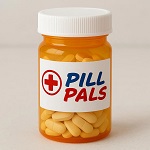 Our Pill Pass® Drug List is only $6.99 or less and Shipping is FREE!
Our Pill Pass® Drug List is only $6.99 or less and Shipping is FREE!


